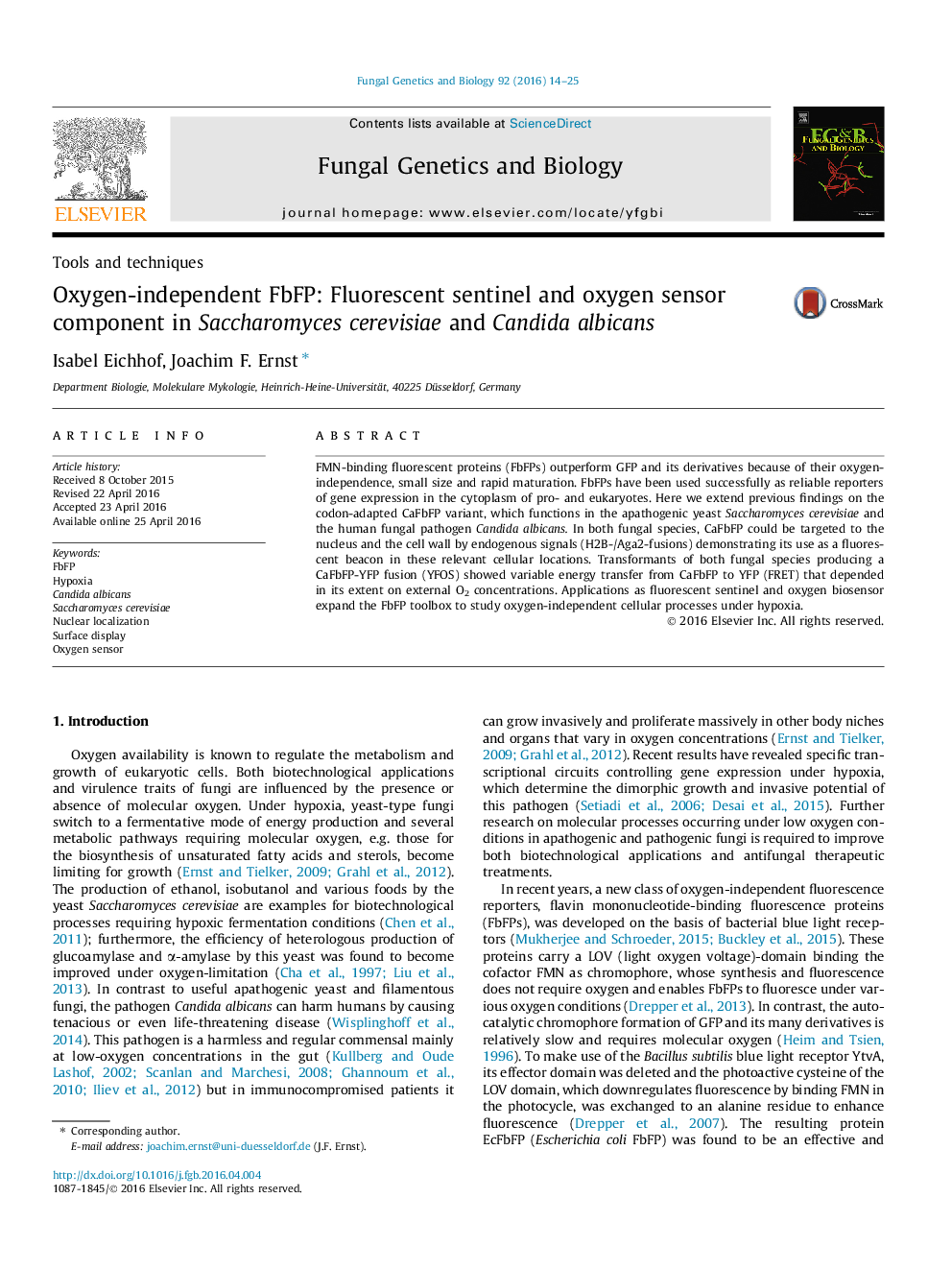| Article ID | Journal | Published Year | Pages | File Type |
|---|---|---|---|---|
| 2180660 | Fungal Genetics and Biology | 2016 | 12 Pages |
•CaFbFP is targeted to and fluoresces in the nucleus of S. cerevisiae and C. albicans.•CaFbFP is targeted to and fluoresces in the cell wall of S. cerevisiae.•The CaFbFP-YFP fusion is a cytoplasmic O2 sensor in S. cerevisiae and C. albicans.•The CaFbFP-YFP fusion is a cell wall-bound O2 sensor in S. cerevisiae.
FMN-binding fluorescent proteins (FbFPs) outperform GFP and its derivatives because of their oxygen-independence, small size and rapid maturation. FbFPs have been used successfully as reliable reporters of gene expression in the cytoplasm of pro- and eukaryotes. Here we extend previous findings on the codon-adapted CaFbFP variant, which functions in the apathogenic yeast Saccharomyces cerevisiae and the human fungal pathogen Candida albicans. In both fungal species, CaFbFP could be targeted to the nucleus and the cell wall by endogenous signals (H2B-/Aga2-fusions) demonstrating its use as a fluorescent beacon in these relevant cellular locations. Transformants of both fungal species producing a CaFbFP-YFP fusion (YFOS) showed variable energy transfer from CaFbFP to YFP (FRET) that depended in its extent on external O2 concentrations. Applications as fluorescent sentinel and oxygen biosensor expand the FbFP toolbox to study oxygen-independent cellular processes under hypoxia.
